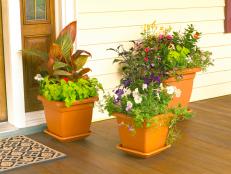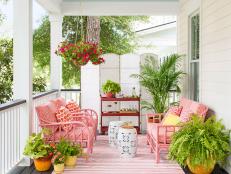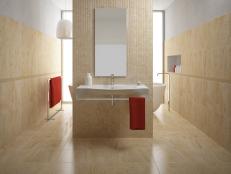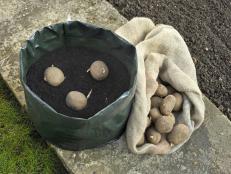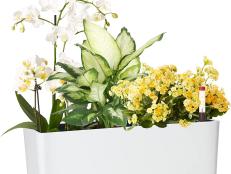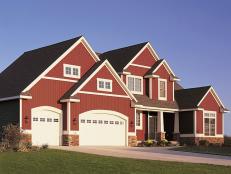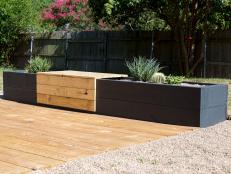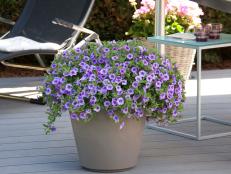How to Choose the Right Container


Image courtesy of Danny Flanders
Planning to create some new container gardens this spring? If so, be prepared to shop around for pots. Containers can be expensive, and as container gardening has mushroomed in popularity over the years, so have the choices in pots.
When choosing a style and material, consider where the container is going. Wooden ones may look great on a deck or in a natural setting, while concrete may be more suited to formal gardens. Synthetic containers (resins, plastics, fiberglass, polymers) have come a long way in mimicking materials such as stone but can be pricey. That ever-popular “clay pot” is all over the board – from inexpensive Mexican to high-end Italian made.
In addition to materials, there’s size – which does matter when it comes to container gardens. In most cases, the bigger the pot, the better – not just for creating good scale but also for giving plants plenty of room to stretch their roots and grow.
But shopping for large, good-quality pots can be a challenge – just one reason Elaine Aw got into the container business 17 years ago in Chamblee, Georgia. “It’s really hard to find big pots,” says Aw, who owns Aw Pottery, just north of Atlanta.
There, it’s not unusual for first-time customers to drop their jaws when they drive up and feast their eyes on a couple of acres stacked with hundreds of pots in rustic earthenware and high-gloss glazes, both porcelain and granite. The pots, imported from China, Malaysia and Vietnam, are durable for garden wear-and-tear in any climate because they are high-heat fired and frost resistant.
Aw offered these tips when shopping for a pot and planting a container:
- First, know where the container will be located so that you purchase the proper size, shape, style and material. Big-scale pots can create a focal point in a garden. Choose a color and finish that will complement plantings, keeping in mind how the pot will look in winter when landscapes can be brown and barren. And select a style—traditional or contemporary—that enhances its surroundings, be it a casual cottage garden, a formal boxwood one, or desert rock garden.
- Determine how it will be used: a container garden brimming with annuals, a single shrub or tree, a water garden? In most cases, err on the side of wider for accommodating root balls and growth.
- Make sure the pot contains a drainage hole – or that you’re able to drill one in it. That may seem like a no-brainer, but it’s easy to overlook when caught up in aesthetics. Avoid saucers, unless you’re concerned about water overflow onto surfaces, because standing water attracts mosquitoes.
- Choose a lightweight soil-less potting mix when planting – not heavy potting soils that can retain too much moisture. And don’t feel compelled to fill a large, deep pot with only soil. For plantings such as annuals and perennials with shallow roots, fill two-thirds of the pot with pine bark, leaves or other mulch and top with one-third potting mix, which makes the planted container easier to move around. Your back will thank you, too!






